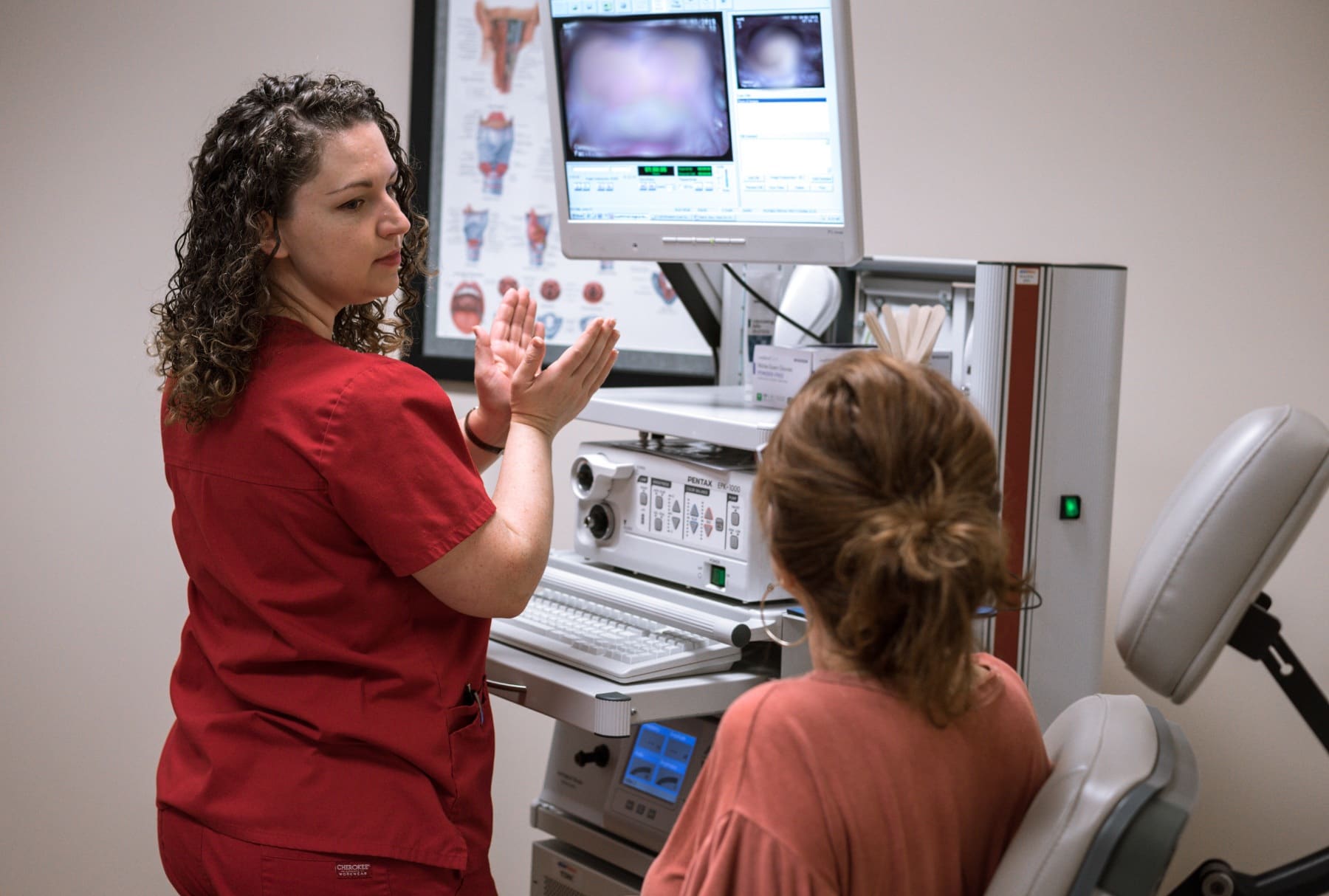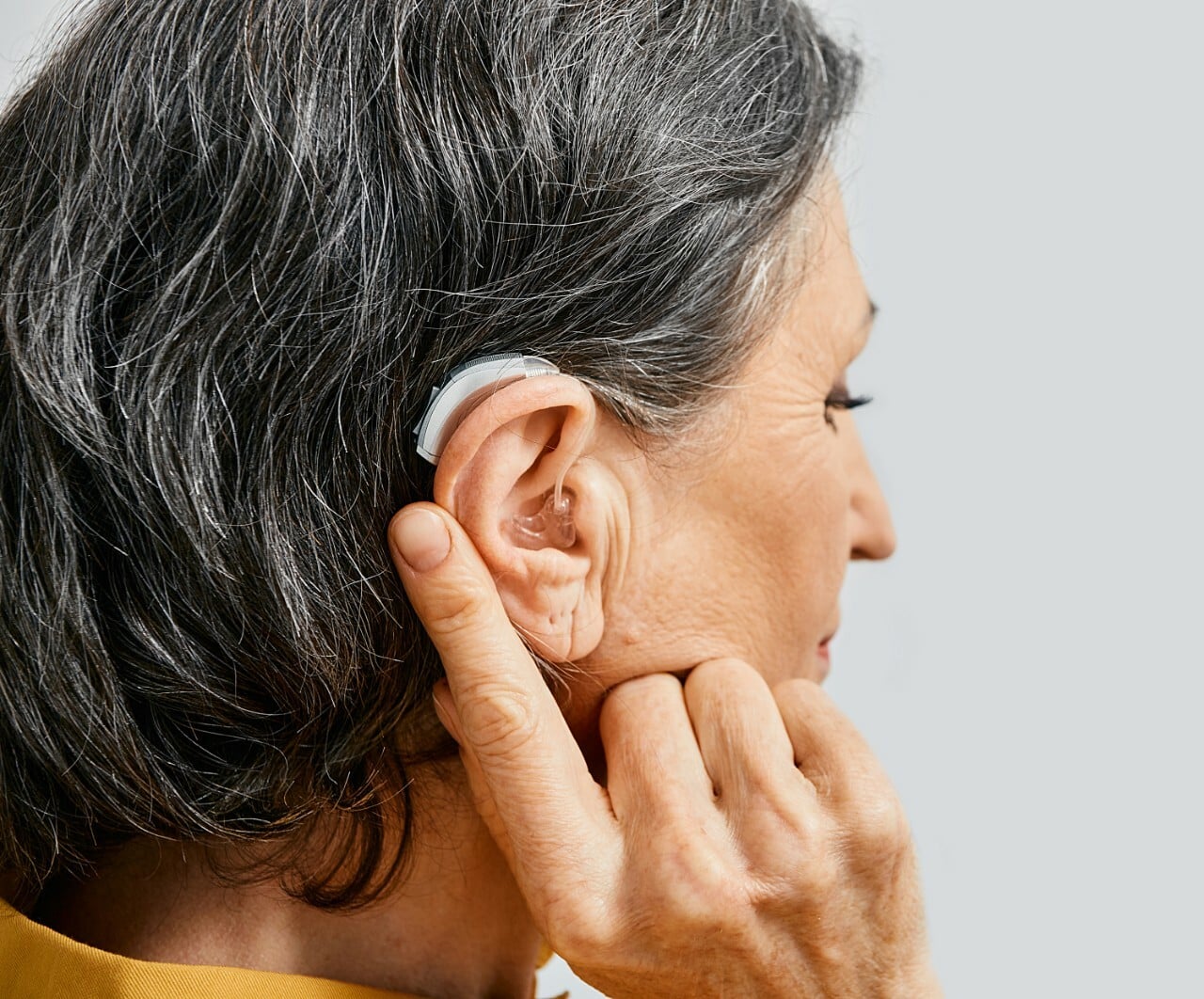Clear, natural hearing isn’t a luxury—it’s a necessity. When hearing loss starts to affect your…

Speech-Language Pathology: One-On-One with Amy Schiwitz
Speech-Language Pathology
Have you ever wondered what a speech-language pathologist, or SLP, can do to help patients? Believe it or not, they do a whole lot more than work with people who stutter, although that is definitely an important part of many SLP’s work. This month, we had the pleasure of sitting down to learn about speech-language pathology with our SLP Amy Schiwitz. She shared how she diagnoses and treats patients with speech, voice, and swallowing disorders.
What is speech-language pathology?
Speech-language pathologists like Amy work with people who have problems with speech, language, and swallowing. Since there is a wide variety of speech, language, and swallowing disorders, SLPs tend to specialize in specific areas or therapies. Amy specializes in the treatment of voice and swallowing disorders at ExcelENT.
She earned her bachelor’s degree at the University of Alabama and went on to earn her master’s degree at Auburn. She has worked in several different types of facilities, including hospitals, outpatient clinics, skilled nursing facilities, and she even worked as an SLP in England for four years. SLPs may work in other settings such as rehab facilities or schools, depending upon their area of focus.
What is a speech, voice, or swallowing disorder?
According to Amy, “speech is a very complex, dynamic muscle activity, which we tend to take for granted.” Disorders with speech, voice, and swallowing all present differently. Often, a person who is having problems with speech will have difficulty pronouncing words correctly. In many cases, the issue may involve damage to the muscles or nerves that we use to speak, such as the tongue, lips, or soft palate. Neurological disorders such as Parkinson’s disease, ALS, or a stroke can cause speech disorders.
Voice issues tend to present differently than speech disorders. Your vocal cords are two tiny muscles covered with layers of tissue, so they’re very delicate. When you speak, your vocal cords vibrate to produce sound. Any problems with the vocal cords significantly impact the voice because, according to Amy, it’s like “putting glue on a guitar string.” Growths on the vocal cords, infections, or improper use of the vocal musculature are common causes of voice disorders.
Like speech and voice, swallowing is much more complicated than most people realize. The muscles in your mouth and throat need to be both strong enough and coordinated enough to properly pass food and drink from your mouth to your stomach. If something goes wrong with the swallowing muscles, you can have trouble getting any food or drink from your mouth to your throat. Sometimes, food may end up going down the wrong pipe into your airway rather than your stomach.
Diagnosing Disorders
Diagnosing a speech, voice, or throat disorder can be a little complicated. All of the muscles that we use for speech or swallowing are contained within our bodies, so SLPs have to get creative to see them in action. When Amy wants to get a look inside, she performs a laryngoscopy. During the procedure, she guides a tiny camera through a patient’s lower nasal passage to reach the throat.
The laryngoscopy usually takes less than a minute and is not painful, although it may feel a bit strange. While the camera is in a patient’s throat, he or she will speak or swallow. Patients need to be active for the procedure because Amy needs to see how all of their muscles are moving to make a diagnosis. She watches the vocal cords vibrate while a patient speaks, or she observes the swallowing muscles contract as a patient takes a drink of water.
With the laryngoscope, she can see into the throat. The diagnostic procedure shows how a patient is using his or her voice and whether there is muscle tension, inflammation, or a growth of some sort. It can also reveal if everything appears to be healthy. Based on her findings, Amy can plan what type of therapy would benefit an individual or whether he or she would benefit from medical or surgical treatment.
Another diagnostic tool that Amy uses is a pH test, which helps her monitor acid levels in a person’s throat for 24-hours. The test helps her diagnose different types of reflux that could cause voice issues.
Therapies
Each person’s therapy is unique to his or her individual disorder and needs. Some treatments may be surgical or medical if a person has a growth on his or her vocal cords or an infection. In other cases, the therapy may involve exercises to strengthen swallowing muscles so that food and drink go into the stomach rather than the windpipe. Amy helps some patients overcome voice disorders from excess muscle tension by teaching them proper vocal techniques.
When is it time to schedule an appointment?
Amy gladly accepts patients of all ages with all kinds of voice, swallowing, and speech disorders, but how do you know whether it’s time to seek help for your swallowing, speaking, or voice troubles?
Eating, drinking, and speaking shouldn’t be a challenge. If you’ve been struggling with hoarseness or voice loss for two weeks or more, are battling a persistent cough, or struggle to swallow with ease, get in touch with ExcelENT today to schedule an appointment with Amy.


